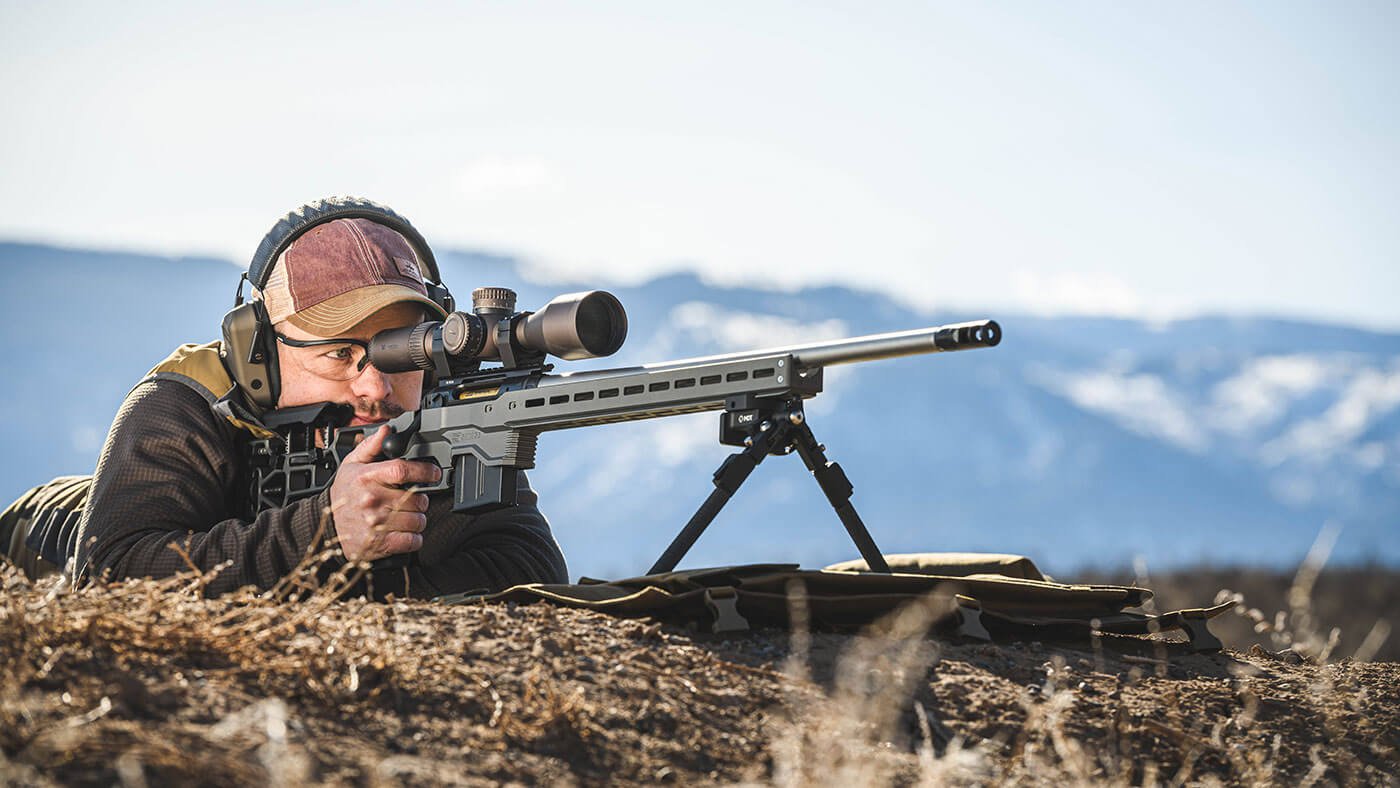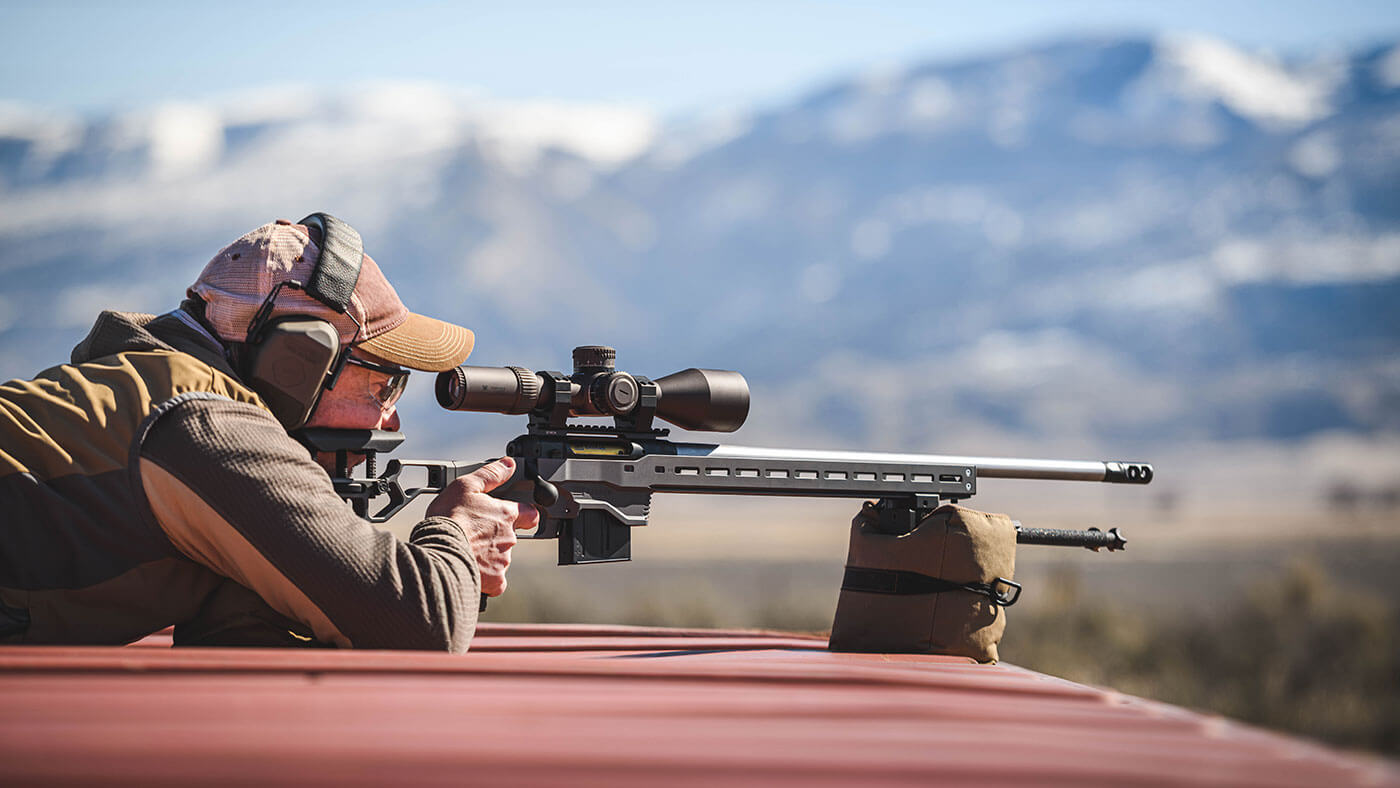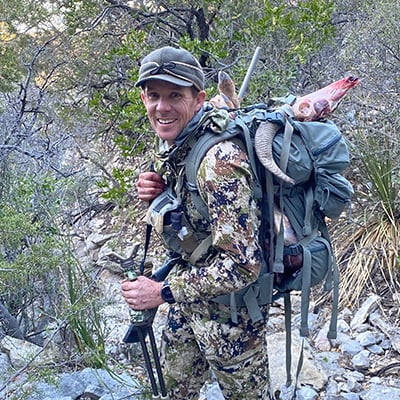- Savage Blog
- Basic Knowledge for Long Range Shooting - Part 2
Basic Knowledge for Long Range Shooting - Part 2

If you plan to be a proficient long-range shooter, there's more to the game than a fancy-to-do scope, making accurate wind calls, and being able to dial your crosshairs to the exact yardage. You have to be able to make the shot, and here's how. You got your feet wet in Part 1. You have a firm grasp of MOA and MRAD, understand wind calls, and know the difference between a dial system and holdover. Great! Still, there's much more to the long range shooting game. If you're looking for new long range shooting tips, you're in the right place!
Rifle Choice
Not all rifles are created equal, and if your goal is to bang steel or punch lungs beyond 700 yards, there are some things you need to consider. The NRA (National Rifle Association) defines long range shooting as 1,000 yards. However, mid-range targets are defined as 600 yards, so anything over 700 yards will be considered long range to cover our bases. Some top long range rifle calibers are the 6.5 PRC, .300 PRC, .28 Nosler, .308 Win., and .300 Win. Mag. Of course, there are others; these are just the tip of the iceberg — proven downrange shooters that work as well at clanging steel as they do at putting big game on the ground.
After deciding on a caliber, you can't head to the sporting goods store and select, say, a .300 Win. Mag, and expect to be a long-range killer. Some rifles are built for long range precision, and if long range shooting is your ultimate goal, there are features you'll want.

First, be sure the gun fits you. Many long-range rifles will have an adjustable length of pull — spacers or pads you can add or remove between the stock's end and the recoil pad. Adjusting the length of pull or distance from the trigger to where the rifle hugs the shoulder ensures the perfect fit and feel. Another feature to pay attention to is an adjustable comb height. The position of your cheek on the stock is essential concerning how your eye lines up with your scope. When you can adjust comb height, you guarantee perfect eye-to-scope alignment.
Next, check the trigger pull. Most long-range rifles will have adjustable triggers, and many have other accuracy-enhancing features like an AccuTrigger. Gun shops worth their salt, if the rifle is a bolt-action, which many long-range shooters are, will let you test the trigger by dry-firing it. A trigger should be crisp and clean, with no creep, and the trigger should break when pressure is applied.
Most long-range guns will have a barrel length of 24 or 26 inches, and top-end barrels will be made of stainless steel, carbon steel, or be a carbon-fiber wrapped barrel. Carbon components are durable and lighter and help manufacturers shave weight. A wider forearm, which can increase balance when shot off sticks or a backpack in a prone position, is another long-range feature of many firearms.
I could pen thousands of words about choosing the right long-range firearm, but hopefully, you get the idea. The most important thing when looking for the right rifle is to not get in a hurry, most savvy rifle makers make a "long-range" version of a rifle, and these will be the models you'll want to cling to.

What About Ammo?
Few things in the long-range game trump ammo choice. Don't be fooled by blogs, social media, and the like. There are many factory loads designed for 1,000-yard work, and the trick is finding one your rifle likes and one your shoulder will tolerate.
I could've tossed this tip into the rifle selection portion of this piece, but it will work better here. Many long-range calibers are designed to spit bullets and spit them fast, and better velocity means less downrange drop and increased downrange energy. To make a round hot, the charge (powder) has to be hot, which means some long-range guns kick like a mule. Yes, muzzle breaks help gas exit the barrel, which reduces recoil, but some long-range guns will kick more than others. You'll never be a great long-range shooter if you can't handle the rifle's recoil. You'll develop flinching habits, and because the gun abuses you, shooting it often won't be something you will do. This is where knowing yourself as a shooter is critical.
The 6mm and 6.5 rounds will offer the lightest recoil, but I know lots of long-range shooters that can handle the recoil of a .300 Win. Mag. and bang steel at 1,000 yards with factory ammo every time they pull the trigger.
Most long-range bullet designs will have a high BC (Ballistic Coefficient) over .450, and the bullet will be a boat-tail design, meaning it will slope in at the bottom. Velocity ratings will be high, and you'll need to keep this in mind. Many long-range bullets prove terrible inside of 400 yards. Why? When they impact a close-range target, they are traveling so fast that there is no controlled bullet expansion. The bullet explodes on impact, which is something you don't want. Most bullet designs will be sleek and slim to promote aerodynamics, and most, not all, though, will have a polymer tip.

PC: Hornady Manufacturing. Bullet pictured is an ELD Match bullet
I advise trying many brands, Federal, Winchester, Browning, and Hornady, to name a few. If you do some testing, you will discover a specific bullet that performs the best out of your rifle, and you'll want to purchase multiple boxes of that bullet.
The Art of Long Range Shooting
When you head to the range to bang steel or put groups on paper at a distance, set yourself up for success, especially if you're new to the long-range game. Don't pick a day when the wind is howling, and don't go when temperatures are too hot or too cold.
When you arrive at the range, you'll need to be shooting off a bench or, preferably, prone with the support of a backpack or bi-pod shooting system. While bench shooting is the most accurate system, it requires a litany of gear, stabilization devices, etc., which you won't have in the field. A prone position is the next most accurate shooting position. You can accomplish incredible gun stability using an attach-to-the-forearm bi-pod system or propping the rifle up on a backpack. The ground is a consistent and reliable support system, and shooting prone requires very little energy. This means you can put in more quality practice.

Take your time when shooting. It's not a race. This is easier said than done, and I promise you, I'm not the best teacher. I can bang steel at a distance and have supreme confidence in my shooting, but I'm not excellent at translating that information. However, Joel Turner, a former police officer and master shooter, is brilliant at teaching others how to become excellent shooters. Turner has dedicated much of his life to helping others achieve the perfect shot, and his advice has helped me over the years.
"Uttering a critical word or phrase after the sights are on the spot you want to hit, and after your finger finds the trigger, will get you through the critical second," Turner said. "The critical second is the one-second in time after we believe the aim is complete, and it's during this time that meltdown can quickly happen."
"You want to remain conscious during your shots and be able to recall everything." We want to avoid the blackout, gotta punch the trigger moments by talking ourselves through the trigger press. The best shooters can talk themselves through the entire process of the trigger press, and they can move from uttering a single word or phrase to talking themselves through the whole process, which is the goal."
According to Turner, what makes talking yourself through the trigger pull process great is that concentration runs through speech. Neuro-linguistic programming is the actual route to attention. If someone's shot needs to change from punching the trigger the second their crosshairs hit the spot, and their finger finds the trigger, something has to change.
"Speech during the shot changes things," said Turner. "There has to be a change. Once the reticle gets on the X, the shooter preloads the trigger, and an audible phrase is uttered."
"'Here I go' is a widespread phrase used when someone jumps off a cliff or out of an airplane. When you're about to jump off a cliff into a pool of water and start thinking about how deep the water is, you will never jump at that moment. It's not until you bring yourself into the present and utter, here I go, that you are present enough to do a movement that will cause your body impact."
When translated to shooting, the same principle applies. You place the reticle on the X, your finger goes on the trigger, and then it's, here I go, to make yourself intensely present, and then you continue to talk yourself through the trigger press.
"It doesn't have to be here I go, either," Turner said. "It can be a humming process, an audible exhale, or any sound or word that gives your movement rhythm and timing and traps your concentration into the movement. What you say is what you move, so talk about the press. How you say, it is how you move. If you need to slow your trigger press down to a closed-loop trigger press, meaning you can stop it, you must first fix your speech pattern. Too many shooters get engulfed in the aim, and concentration is not practiced, which is where hunters fail.

Now's the time. You have months before season begins, and if you want to be a long-range shooter, put the tips and tactics in this article to practice and get after it.

